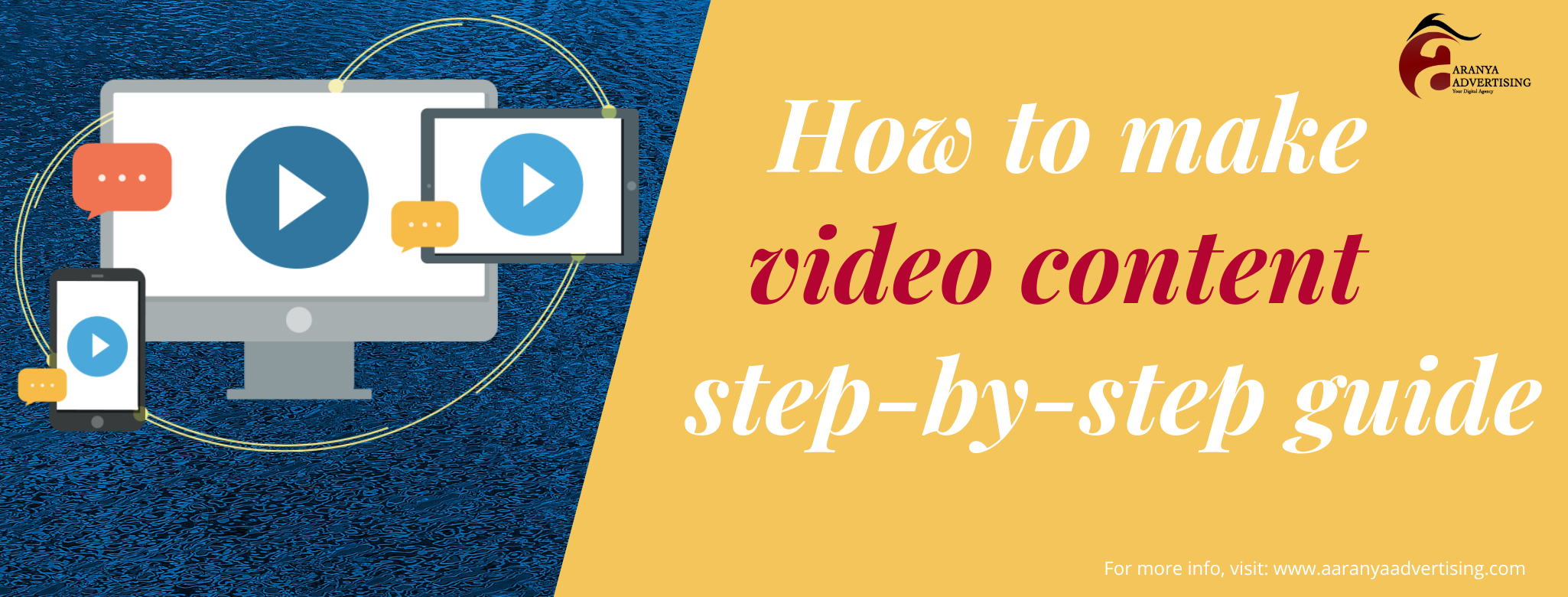How to make video content – step-by-step guide
It goes without saying that incorporating video content into any digital marketing campaign can significantly raise the likelihood of success. Of all the marketing material types, videos are the most interesting and accessible. There are several statistics available to back up this hypothesis. For instance, a recent Forbes study found that 78% of individuals view videos at least once per week, and 55% do it every day. Compared to a few years ago, customers interact with video content more frequently today. And it continues to rise daily. The greatest strategy to stay in the spotlight in the increasingly competitive digital world is to incorporate videos into your marketing strategy. A solid understanding of the production process can make a significant difference in the success of your business.
A successful start requires careful planning and study. Pre-production, production, and post-production are the three main stages of making a video. A well-run pre-production stage can greatly aid the next processes.
Pre-Production
1. Find your target audience
Who is the target audience of this video? Knowing the target audience’s demographics, such as age, gender, and geography, is only one aspect of comprehending them. Beyond these fundamentals, thorough research on their preferences, hobbies, patterns of online content engagement, issues, and worries will be beneficial throughout the creation of the film. All of these questions can be answered through interviews, customer feedback, and other means of communication with your social media fans and current clients.
2. Outline Objectives
As with any campaign, the best place to begin is by identifying your end goals. The purpose of the film, the performance standards, the audience’s takeaway, and other goals must be clearly stated from the beginning. Ultimately, the effectiveness of your material will be evaluated in relation to these goals.
The primary message of your content is simple to develop after you have the research information and objectives for your audience. Basically, the video may focus on one compelling idea. At the conclusion of the video, it ought to be the main point that viewers take away.
3. Video Strategy and Production Plan
Simply told, a video strategy is a well-thought-out plan that considers the logistics, spending limit, and production schedule. A streamlined and trouble-free production process will increase the likelihood of obtaining the best ROI by providing a logical foundation to which to refer.
4. Determine the Creative Style
It’s time to consider your video’s look and feel now that you’ve gathered the data and material for it. Although the video’s aesthetic appeal and visual quality are crucial to its success, content is still king. Even if you have a fantastic product or service and powerful messages, how you display them to the audience is crucial. To find the one that most aligns with your objectives and ambitions, consider a number of ideas and concepts. This is your chance to demonstrate the individuality of your brand and yourself.
5. Draft the Script and Storyboard
Keep your script natural, straightforward, succinct, and entertaining. You don’t want the message to be difficult to understand for your audience. The greatest strategy is to keep things simple. The cast, location, set, props, and other information can all be included in the script, depending on the type of video you are producing.
Production
Produce the video: Your storyboard will provide specific instructions for lighting and camera positioning. From this point on, stick to the outline and capture your content. Make as many attempts as necessary to achieve the desired outcome. No matter how big or small the production, well-shot video facilitates editing.
Post-Production
1. Editing the video
It’s time to gather and edit the best pictures. This is made easier by the abundance of internet video editors, and you won’t need need to engage experienced editors. When editing, keep in mind that the final video should be brief and visually appealing without losing the important points.
To improve the aesthetic appeal, you can use an online video editor to add more graphics, animations, music, and special effects. Here are some ideas to keep in mind when you add these improvements:
- The video should not be overcrowded.
- Graphics and animations should enhance the content and message.
- Content should not be overwhelmed by special effects.
- A video’s background score and music should match its tone.
- The voice-over should be clear and expressive.
2. Distribution and Promotion
You can save the adjustments in the format and quality needed for hosting after the final cut satisfies your standards. Depending on the goal and the platform it uses, this might be the case. Utilize social media’s influence and distribute your material over a variety of channels to ensure maximum exposure. You may also host it on paid channels, utilize paid advertising, or distribute it via emails and newsletters. Be consistent with the approach you outlined from the outset and take into account the best method for reaching your target audience and generating a profit.
Happy Reading !!
Furthermore, for updates, please visit www.aaranyaadvertising.com or else feel free to write to us at info@aaranyaadvertising.com.




